How many people attend the American Film Market?
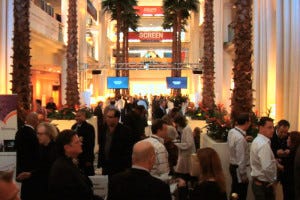
In a few days, the 36th annual American Film Market (AFM) opens for business, which will be followed by eight days of furious buying and selling film rights, workshops, screenings and industry gossiping networking. The AFM is one of the three biggest dates in the annual calendar of film business professionals, alongside the Cannes Marche (hosted in France in May) and the European Film Market (hosted in Berlin in February).
I took a look at the numbers behind the AFM. In summary...
In 2014, 7,946 people attended the American Film Market
The year with the AFM's highest attendance was 2007, with 8,343 people
In 2014, the AFM accredited 1,670 official buyers
'Accredited buyers' must have bought at least three feature films (or TV shows) from IFTA members in the past three years
In the past ten years, the number of buyers from Japan has fallen by 44%
The number of buyers from China has risen by 354% since 2005
How many attendees are at the American Film Market?
Although it's primarily a trade show for the film industry, anyone is welcome to buy a ticket. Prices range from $250 for a single day right up to $1,395 for a Platinum Badge which gets you onto the sales floor, to screenings, conferences, cocktails parties, networking and more.
Attendance has risen each year over the past three years, although the 2014 figure of 7,946 was slightly shy of the AFM's record attendance in 2007 of 8,343.
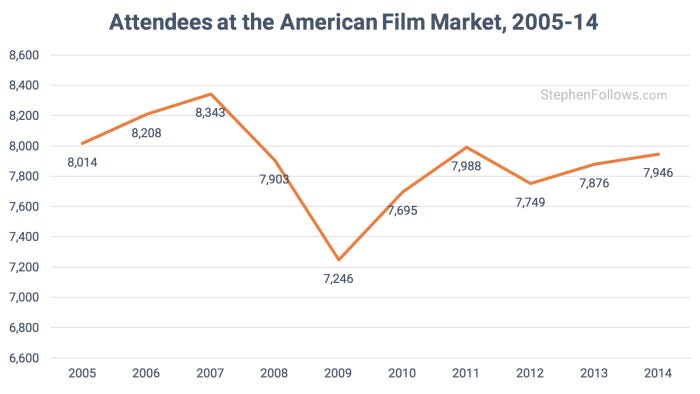
Who's buying at the American Film Market?

The AFM is run by a trade body, the Independent Film & Television Alliance (IFTA), who represent 145 companies, including production companies, distributors, sales agents, television companies and financial institutions engaged in film finance. Its principal aim is to provide an environment for companies to distribute film rights, meaning that the most important group of people are the buyers.
Being an official buyer at the AFM is akin to being the birthday girl at a lavish party or being Robert Downey Jr anywhere - i.e. everyone wants to chat to you and treats you like you're kinda a big deal. Consequently, IFTA are quite strict about who they grant buyer badges to, restricting them to companies who have bought at least three feature films (or TV shows) from an IFTA member in the past three years. If you're approved, then a Buyer's badge will set you back $495 ($695 if you want to attend the conference as well).
The number of buyers at the AFM is a useful clue in determining the overall health of the film economy. As you can see below, 2009 was a bad year, with numbers down at the AFM, at the Cannes Marche and many other film trade events. This was due to an over-supply of films in the early 2000's which drove down prices and undercut sellers available to pre-sell films in the manner the industry had been used to. (If you want to hear more about this, then here's a good article on SSN about what happened).
However, numbers have bounced back and in 2014 the AFM had the highest number to date, 1,670 accredited buyers from 794 companies. That means that 21% of AFM attendees are accredited buyers.
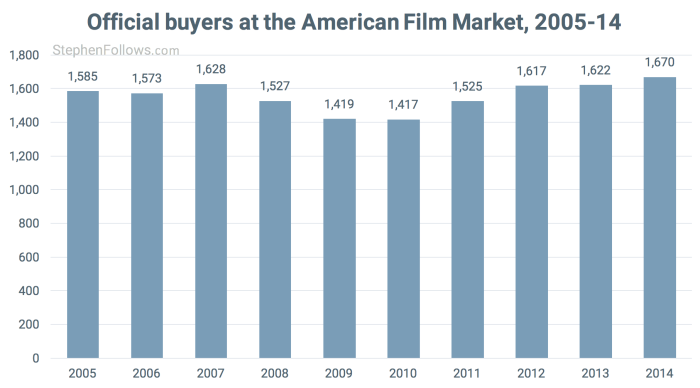
Nationality of American Film Market buyers
In 2008, 24% of accredited buyers at the AFM were from Asia but by 2014 that had grown to 31%.
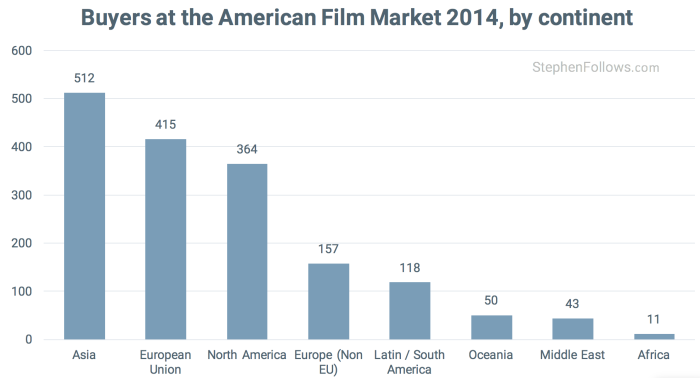
Over the past decade, the AFM has had accredited buyers from 80 different countries in total. Unsurprisingly, the country sending the largest number of buyers to attend the American Film Market is America, with 331 accredited buyers attending in 2014 (20% of all buyers).
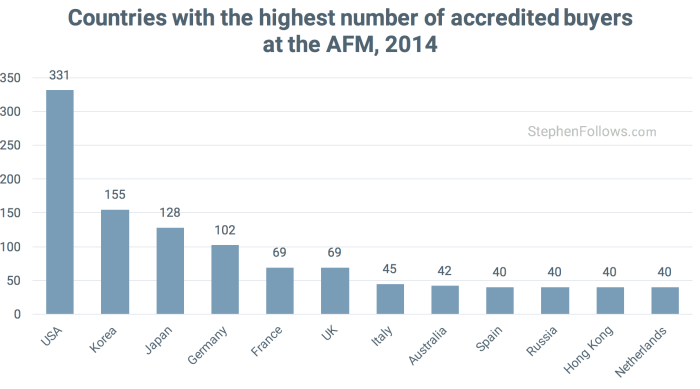
The country sending the second largest contingent in 2014 was Japan, although their numbers have shrunk considerably in the past decade, falling by 44%. The charts below show the change in the number of accredited buyers at the AFM between 2005 and 2014, for the 20 countries with the highest AFM attendance rates.
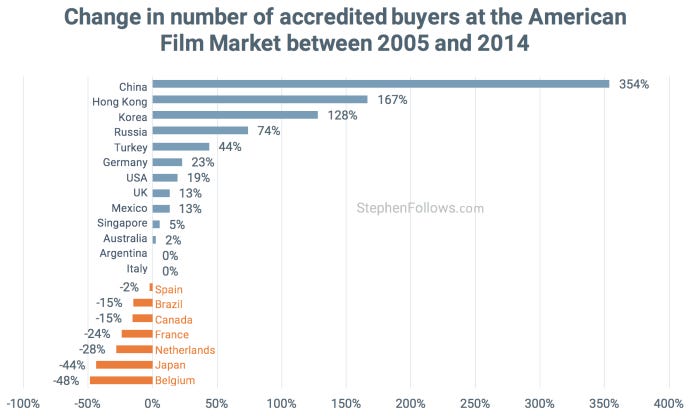
The table below gives you the fine detail on the number of officially accredited buyers at the American Film Market over the past 10 years.
[table id=79 /]
Epilogue
I'm very grateful to the AFM for providing me with the data on official buyers. Other data came from the AFM site, press releases and film trade publications.
The country assigned to each buyer is linked to where they live, not where they operate. While most buy for that country, some buy for other countries too. For example, some US-based buyers represent a US satellite office of a non-US company or they are a middle-man buying for countries that have few buyers at AFM.
I have refrained from using these numbers to make any bold claims about the health of the film industry in one particular country from one year to the next. Many things can cause a country's attendance numbers to fluctuate slightly each year, and the raw number of people a country sends does not necessarily tell how their film economy is faring (it doesn't take into account seniority of attendees, films bought, money spent, etc).


